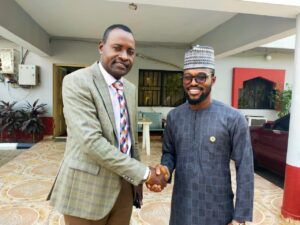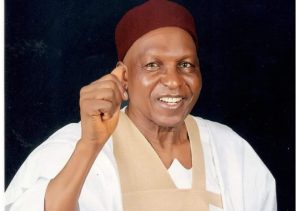Typhoon Trump blows G7 off course
Other leaders thought they’d kept the club together — until the US president tweeted his fury.
LA MALBAIE, Canada — As host of this year’s G7 summit, Canadian Prime Minister Justin Trudeau seemed to have just one over-arching goal: to get through the gathering without U.S. President Donald Trump blasting it to pieces. Trudeau succeeded — for all of about 90 minutes.
Just an hour and a half after Trudeau finished his concluding news conference, an irate Trump tweeted that he had “instructed our U.S. reps not to endorse the Communique” and threatened to impose tariffs on automobiles. He accused Trudeau of making “false statements” to the press.
Other G7 officials said Trump was too late. The communiqué was agreed, the summit done, the leaders packing up or already gone — like Trump himself, who tweeted his fury en route to Singapore to meet North Korean leader Kim Jong Un.
Technically, the others may be right. But from a political perspective, Trump’s rant — and his proven willingness to tear up international agreements — effectively rendered the leaders’ joint declaration moot.
The G7 thought it had lived to fight another day — even if that fight is increasingly internal, between the U.S. and other members of the club. But it may need to fall back on a statement by French President Emmanuel Macron who, noting differences with Trump, had said, “We don’t mind being six if need be.”
At the most contentious summit in the organization’s 43-year existence, Trump had clashed with the six other leaders of the world’s leading industrialized democracies over trade, stubbornly insisting that his country — the world’s richest — has been victimized and abused by its best friends and allies for decades.
Trump arrived late and left early, and his standoffishness — on trade, climate change, the Iran nuclear deal and other issues — dominated the meeting in Quebec at an elegant château on a bluff over the St. Lawrence River.
The setting was beautiful, but the summit wasn’t pretty.
On his way out, Trump re-upped the trade war that he launched with stiff tariffs on steel and aluminum, threatening to cut off trade entirely with countries that don’t agree to lower tariffs that he views as unfair and unjustified. “We’re like the piggy bank that everybody is robbing,” Trump griped at a news conference. “And that ends,” he warned.
However, for the other leaders, vexed by Trump’s disruptiveness and pattern of minimal willingness to negotiate despite claims of being a deal-maker, merely keeping the combustible American at their oval table was a victory.
“What we did this weekend was come together, roll up our sleeves, and figure out consensus language that we could agree to on a broad range of issues,” Trudeau, the summit host, said at his closing news conference.
But the summit seemed to mark an important turning point in how foreign leaders deal with a Washington they feel they can no longer trust. With no overt show of hostility, and in leveled, even understated language, Trump’s colleagues made clear that he was the odd man out, that they thought he was wrong and uninformed, and, especially, that they would not be bullied.
“Canadians, we’re polite, we’re reasonable, but we also will not be pushed around,” Trudeau said.
Canada, like the EU, he said, would move forward with retaliatory tariffs against the United States. And in one of the starkest confrontations with Trump, Trudeau flatly disputed the president’s assertion that a sunset clause, which Canada opposes, would be included in a re-negotiated North American Free Trade Agreement (NAFTA).
There will not be a sunset clause,” Trudeau said, explaining that talks were ongoing. And, demonstrating a belief that Trump needs certain points repeated, he later added, “There will be no sunset clause.”
Saying no to Moscow
The de facto G6 were similarly resolute in pushing back against Trump’s assertion that Russia should be re-invited to these gatherings — an idea he put forward unexpectedly as he was leaving the White House on Friday and repeated again during a dinner conversation Saturday night on foreign policy.
Russia was ejected in 2014 for its invasion and annexation of Crimea, but Trump said he wants Russia back anyway.
“We didn’t do votes or anything, but it has been discussed,” he said. “This used to be the G8, not the G7. And something happened a while ago, where Russia is no longer in. I think it would be an asset to have Russia back in.”
He added, “We’re looking for peace in the world. We’re not looking to play games.”
Even new Italian Prime Minister Giuseppe Conte, who had initially expressed support for Trump’s position, retreated and said Russia must first meet its commitments to implement a peace agreement in Ukraine. Pressed about Crimea, Trump unleashed a barrage of criticism against his predecessor Barack Obama but said nothing critical of Russian President Vladimir Putin.
The Quebec summit left other leaders, particularly from Europe, increasingly convinced that Trump does not grasp the complexities of global trade — just as he has repeatedly demonstrated little understanding of NATO financing, even as he has badgered allies to increase their military spending.
A photograph tweeted by German Chancellor Angela Merkel’s spokesman seemed to sum up the view from Berlin — it showed other leaders standing up around Trump, who was sitting down with his arms folded. Merkel was leaning forward toward Trump, and could easily be interpreted as leading a joint effort to change the U.S. president’s mind.
Nevertheless, the photograph also showed that Trump was the center of attention.
Officials said that there were intense negotiations around the final leaders’ communiqué, which in the end included a reference in its first paragraph to the “rules-based international order” which the Americans initially wanted to remove.
In a concession to the U.S., any reference to the Iran nuclear agreement was removed.
Free trade surprise
Trump surprised the other leaders by proposing that the G7 work toward ending all tariffs, non-tariff trade barriers and government subsidies — an audacious suggestion from a president who has previously expressed deep disdain for free trade agreements and pursued neo-protectionist policies.
“So you go tariff-free, you go barrier-free, you go subsidy-free,” Trump said. “That’s the way you learned at the Wharton School of Finance. I mean, that would be the ultimate thing.”
Trump’s top economic adviser, Larry Kudlow, who was with him, portrayed the proposal as a bold move.
“As the president said, reduce these barriers,” Kudlow said. “In fact, go to zero. Zero tariffs. Zero non-tariff barriers. Zero subsidies. And along the way, we’re going to have to clean up the international trading system, about which there was virtual consensus of agreement on that.”
French President Emmanuel Macron expressed skepticism about whether Trump was ready to follow through on his proposal. He switched from French to English in his closing news conference to declare: “Be my guest.” But he also sketched out various trade barriers the U.S. currently deploys against the European Union and noted Trump had just imposed new ones in the shape of the tariffs on steel and aluminum.
Back in his native language, Macron adapted an old figure of speech to say it would take seven to dance that particular tango.
Some Americans were also taken aback by Trump’s proposal.
“If the President is actually serious about leading the expansion of a G7 no-tariff, free-trade agreement, that’s tremendous, tremendous news — for the U.S. and for the free nations of the world,” Senator Ben Sasse, a Republican from the farm state of Nebraska, said in a statement.
“I would happily carry his bag to every single meeting of those negotiations,” Sasse said. “But the path to more trade begins with less whining on the global stage. The simple fact is that more trade has been overwhelmingly beneficial to U.S. families and to net U.S. job creation for 75 straight years, and pretending America has been taken advantage of — that is, pretending that we’re losers — isn’t true.”
To the Europeans, it indicated that Trump is fixated on tariffs without taking account of a complex range of regulatory and other issues. In theory, they would love to work with him on ending all tariffs. In reality, they do not think he is serious.
“He comes here in a highly demanding environment, where these people are very skilled,” said one senior European official who observed the discussions with Trump. “And he comes here with a simplistic sort of approach that is tailored to the domestic audience.”
Trump unhappy with EU ‘tax lady’
Trump had particular venom for the EU, which was represented by Council President Donald Tusk and Commission President Jean-Claude Juncker. Trump seems to have finally grasped that the Commission handles trade policy on behalf of the entire bloc, and so in the discussion on trade, he turned on Juncker, according to witnesses.
“Jean-Claude, you are so brutal,” Trump said. Later, the U.S. president also complained about the EU’s competition commissioner, Margrethe Vestager, who has imposed major financial penalties on U.S. companies for regulatory and tax violations. Trump did not recall her name, nor did he seem to know her official title.
“Your tax lady,” Trump told Juncker. “She really hates the U.S.”
At his news conference, Trump repeated the complaints about the EU.
“The European Union is brutal to the United States,” he said. “They know it. When I’m telling them, they’re smiling at me. You know, it’s like the gig is up. It’s like the gig is up … There’s nothing they can say. They can’t believe they got away with it.”
But he warned, “It’s going to change. They have no choice. If it’s not going to change, we’re not going to trade with them.”
The final communiqué included some of the group’s traditional language that it will “continue to fight protectionism.”
The statement, like last year’s statement at the summit in Taormina, Sicily, included language on commitment to the Paris climate change accords that did not apply to the United States.
Trudeau hailed the consensus on the declaration as proof that the G7 had persevered amid tough disagreements. But 90 minutes later, after Trump’s tweets, it looked like the leaders had not even managed to do that.








